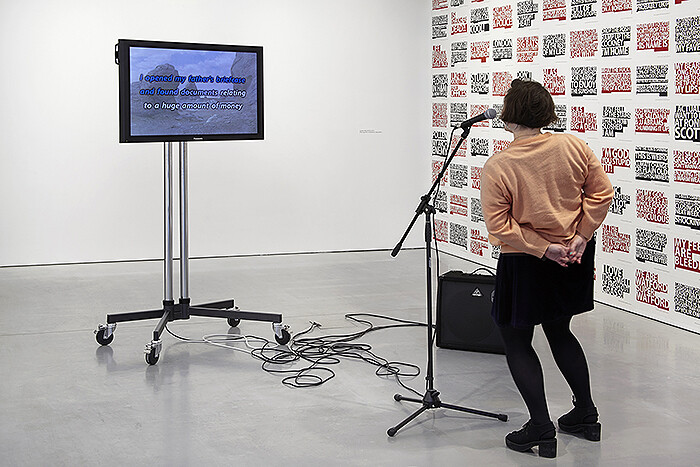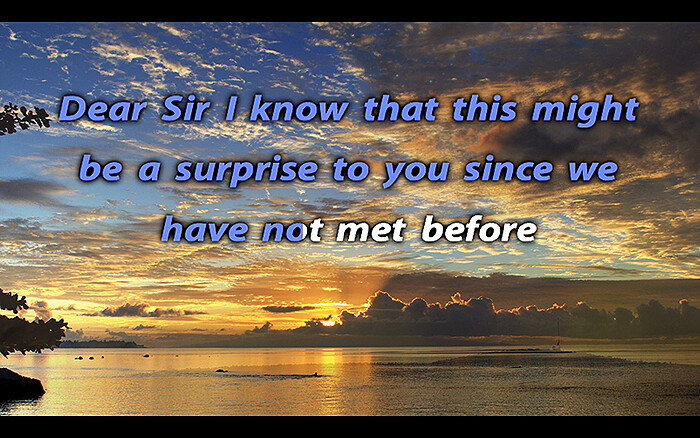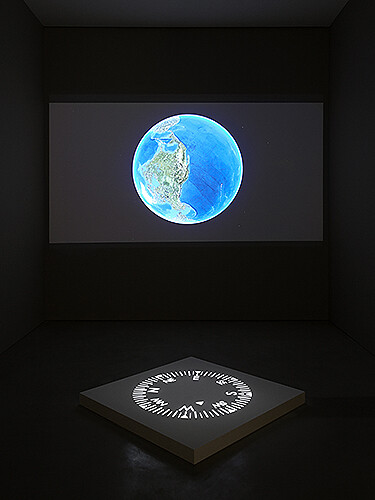“Never Odd or Even” seamlessly traverses the twenty-year trajectory of Jon Thomson and Alison Craighead’s practice, marked by their explorations of the World Wide Web and the (mis-)information it creates and disseminates. In their video games and installations, they present a set of narratives that, one imagines, might resemble the results as displayed to an extraterrestrial who has tapped into planet Earth’s search engines.
Installed in the basement of Carroll / Fletcher’s gallery in London’s upmarket West End, Belief (2012) marks the end of the artists’ Flat Earth Trilogy. Sourced from YouTube, Google Earth, and Flickr, this video triptych ponders the effect the proliferation of online content has had on perceived reality. For the artists, the overwhelming catalog of opinions, speculations, rants, and manifestoes for which the internet provides a platform has resulted in a flattened, collapsed perception of faith or religion. Belief presents a series of clips posted on YouTube by self-anointed prophets. A young Christian woman proclaims the Fukushima earthquake as a message from God to the atheists, having shaken the shoulders of Japan and said, “Hey listen, I’m here.” A surprisingly sober Satanist in San Diego tells us that “most Satanists are really atheists: we don’t believe in God, we don’t believe in the Devil… we don’t believe in heaven and hell,” while a Scientologist in Orlando announces, “Your only chance to evacuate [Earth] is with us!” Each abbreviated clip is linked to a projected compass on the floor, which shows us the geographic origin of the video and our distance in kilometers from it to the gallery in London. Google Earth and Flickr add a cinematic element to the video, where we are pulled in and out of our planet’s atmosphere, zooming in on the private spaces from where these public messages were transmitted. The juxtaposition of cinematic tropes with the pixellated webcam aesthetic of the online confessional underlines the absurdity of the content while profanely localizing them. Despite the homemade videos’ online audiences, some numbering the thousands (whether critics or followers) in Belief they are presented “as is,” with little interpretation or judgment, as a disparate set of voices, dotted randomly across the globe.
One of the earlier works in the exhibition, Trigger Happy (1998), is a hacked version of Space Invaders, where the viewer is invited to shoot down words from Michel Foucault’s 1969 essay “What is an Author?” transposed where aliens would have been in the original video game. Overtaken by a desire to smash apart words to create new meanings of the seminal text, the work plugs into the potential for play(fullness) by using an instantly recognizable game (at least to my generation), closely associated with early internet pastimes. Despite its age, Trigger Happy bespeaks the same tongue-in-cheek critique of how often contemporary artists outsource meaning to theory and philosophical discourse in an effort to explicate—or unnecessarily complicate. Thomson’s admission that “to this day I have a very partial and scattergun understanding of philosophy and theory” is telling in this regard. 1
Posters are continuously added to Thomson & Craighead’s installation London Wall W1W (2013) that displays selected posts from social networking sites, including tweets sourced from within a one-mile radius of the gallery. A (semi-)live feed connecting the space to its surroundings, the short statements range from the profound to the mundane, and offer up a strange portrait of the thoughts and concerns of a community united only by their location and shared use of social media platforms. In a similar way, BEACON (2007) utilizes real-time internet activity, displaying random Google searches every minute on a modified railway flap sign. As with Trigger Happy, the medium is a delightfully dated apparatus, which in its anachronism offers a new lens through which to examine contemporary online behavior.
If anything, the works on view exemplify how meaning is pinned to individual, divergent perceptions. With humor and élan Thomson & Craighead have reframed the internet and its “knowledge production” in an effort to make visible otherwise esoteric and virtual processes. Like the palindrome of the exhibition’s title, “Never Odd Or Even,” Thomson & Craighead’s oeuvre presents us with a set of oscillating and expansive investigations. While often highlighting the extremes of human belief, behavior, and communication, it is simultaneously a vivid portrait of a dissonance of voices, all harbored and fostered by the internet—and how they amount to a noisy, resounding, autopoietic nothingness.
Jon Thomson and Alison Craighead interviewed by Morgan Quaintance, http://morganquaintance.com/2011/07/28/interviews-thomson-and-craighead/







